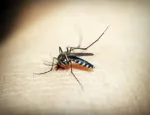Geneva, Aug 28
The triennial World Wildlife Conference, known formally as CoP18 of the Convention on International Trade in Endangered Species of Wild Fauna and Flora (CITES), on Wednesday responded to extinction crisis by strengthening international trade regime for wildlife.
The conference revised the trade rules for dozens of wildlife species that are threatened by unsustainable trade linked to overharvesting, overfishing or overhunting.
These ranged from commercially valuable fish and trees to charismatic mammals such as giraffes to amphibians and reptiles sold as exotic pets.
Continuing the trend of using CITES trade quotas and permits to promote sustainable commercial fisheries, the conference, attended by 169 nations plus the European Union and some 1,700 delegates and observers here, decided to add 18 more shark species to Appendix II.
They included blacknose and sharpnose guitarfishes, which are highly valued for their fins and considered endangered by the IUCN Red List of Threatened Species.
Shortfin and longfin mako sharks, together with white-spotted and other species of wedgefishes, were also listed in Appendix II, which includes species not necessarily threatened with extinction, but in which trade must be controlled in order to avoid utilization incompatible with their survival.
Other marine species addressed by the conference included eels, teatfish (sea cucumber), queen conch, marine turtles, precious corals, sturgeons and seahorses.
Governments furthermore agreed to examine the trade in live ornamental marine fish to assess what role CITES could or should play in regulating this trade.
Tropical timber trees comprise another wildlife market of high commercial value.
Noting that giraffes have declined by 36-40 per cent over the past three decades due to habitat loss and other pressures, the conference added the world's tallest animal to Appendix II.
Asia's smooth-coated and small-clawed otters, threatened by habit loss and possibly by trade in live animals, were transferred from Appendix II to Appendix I, which prohibits all commercial trade in the species that it lists.
Because the growing exotic pet trade has put enormous pressure on many species of turtle, lizard and gecko, CITES added a range of these species to the Appendices.
The Parties established the CITES Big Cat Task Force with a mandate to improve enforcement, tackle illegal trade and promote collaboration on conserving tigers, lions, cheetahs, jaguars and leopards.
"Humanity needs to respond to the growing extinction crisis by transforming the way we manage the world's wild animals and plants. Business as usual is no longer an option," said CITES Secretary-General Ivonne Higuero.
Celebrating the successes and strong decisions at COP18, Susan Lieberman, Vice President of International Policy with Wildlife Conservation Society, told IANS that species received needed trade protections.
"The governments of the world have now put more teeth into protecting the world's sharks and rays," she said.






